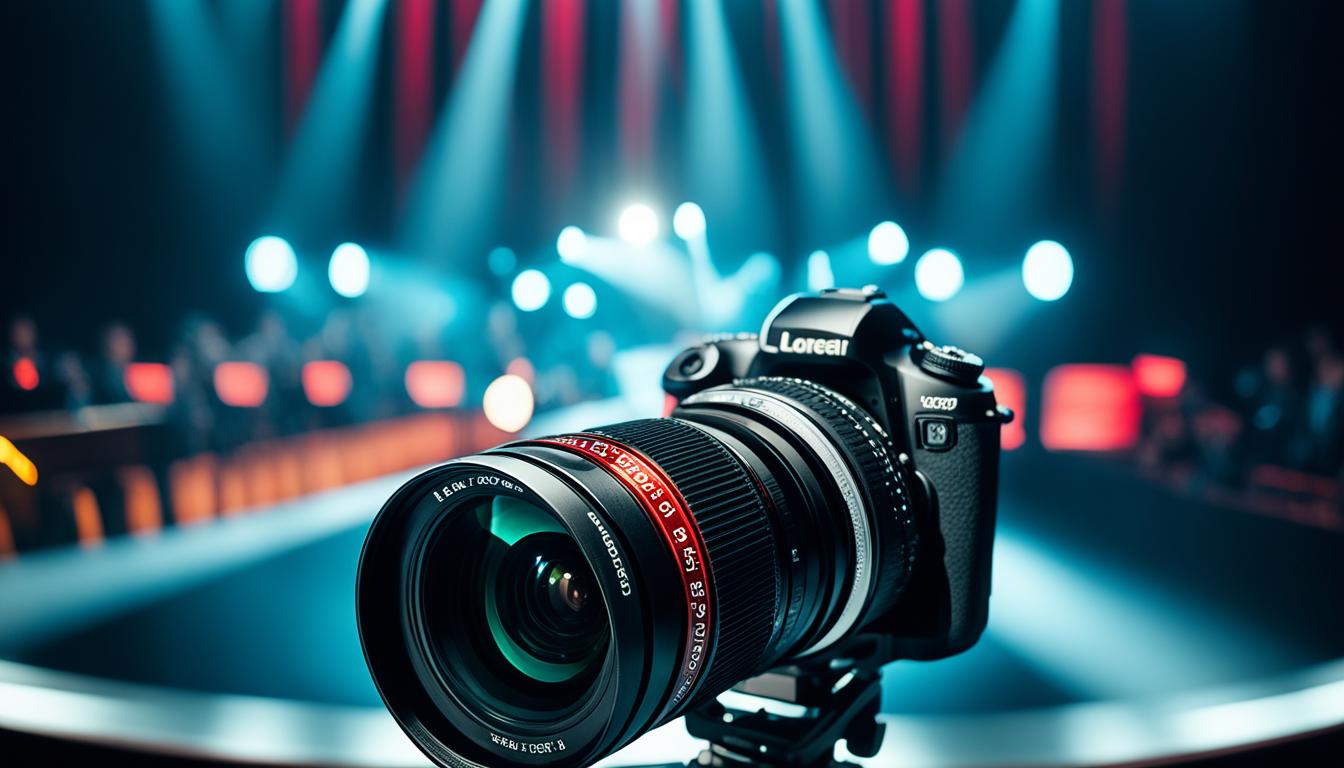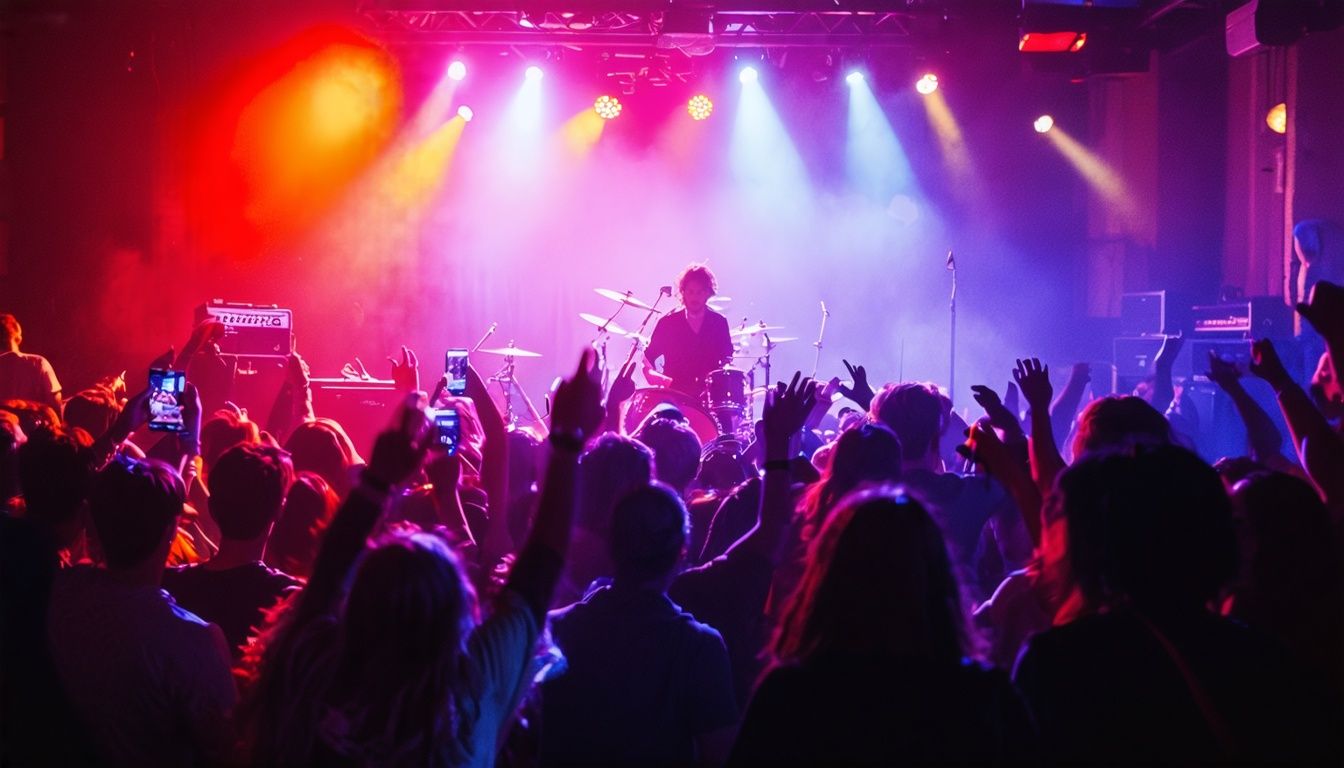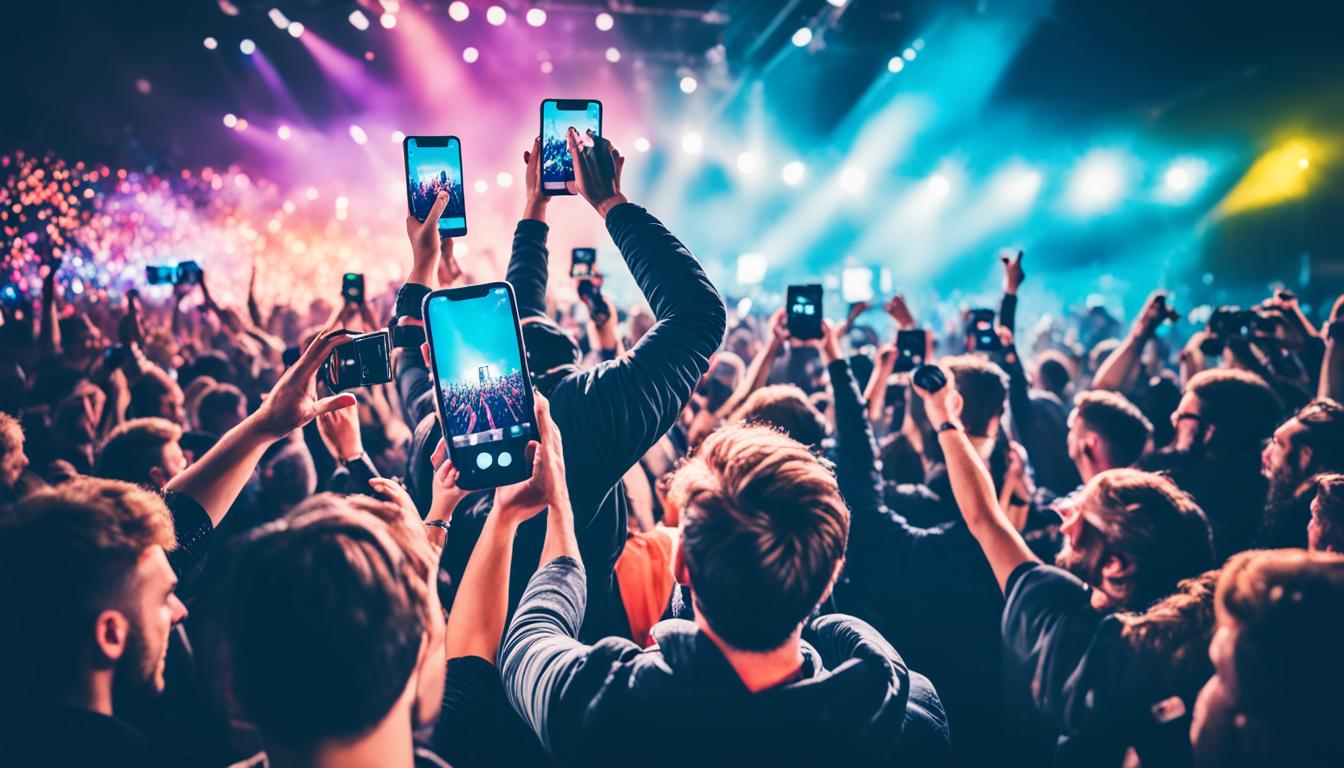In concert photography, the excitement of shooting electrifying stage moments is just the start. But we can’t forget the legal side. It’s about copyright laws, managing rights, and having the right paperwork.
We need a balance between our art and knowing the rules. This balance keeps our work safe and respects the artists. Let’s learn how to keep our work legal and creative.
Key Takeaways
- Understanding copyright laws for concert photos is essential for protecting your work.
- Establish clear image usage rights to define how your concert photos can be exploited.
- Model release forms are not just paperwork; they’re a photographer’s defense.
- Staying up-to-date on digital rights management protects your concert photography online and offline.
- Backstage passes aren’t the only access needed—know the legal ins and outs of your venue.
Understanding the Legal Framework of Concert Photography
Diving into concert photography means understanding its legal framework. The rules for music event photography can change based on the venue, artist, and even the country. So, it’s crucial for us to stay alert and flexible. Taking photos is more than capturing moments. It’s about following a detailed set of rules for these live events.
Following concert photography regulations is a must, not just a nice gesture. Event photography faces a unique mix of privacy laws and public rights. Whether taking a shot of a lively crowd or a special moment with the artist, knowing the legal side of using these images is key.
Here is a table with important points that help us keep our concert photography both creative and legal:
| Aspect | Consideration | Action Required |
|---|---|---|
| Venue Rules | Varying restrictions on camera use, designated areas, and other specifics | Confirm with venue management prior to the event |
| Artist Requirements | Artists or their management may impose specific shooting conditions | Obtain a photography pass or agreement outlining these terms |
| Privacy Concerns | Identifying and respecting the privacy of attendees and performers | Seek consent where necessary, be aware of individual rights to privacy |
| Legal Boundaries | Compliance with local and international copyright and privacy laws | Stay informed on legislation, possibly consult a legal professional |
Our goal is more than just following privacy laws for event photography. We aim to capture the spirit of live music moments, legally. By sticking to these guidelines, we make sure our concert memories can be freely shared. We do this while respecting ethical standards and the legal framework that protects photographers, artists, and fans.
Concert Photography: Legal Considerations
In concert photography, it’s crucial to understand legal matters as well as the camera we use. This ensures our work and practices are protected by law.
Navigating Copyright Laws for Concert Photos
When we take photos at concerts, we automatically own those images, thanks to copyright laws. This protects our work from being used without our permission.
Identifying Music Event Photography Rules
Every concert has different rules, often set by the artist’s management. These music event photography rules may limit the songs we can shoot or the use of flash. We must be flexible and adaptable.
The Significance of Photo Release Agreements for Performers
Understanding photo release agreements for performers is also key. These agreements respect subjects’ rights and ensure they are compensated for being in our pictures.
Managing Venue Photography Regulations
Potential regulations may also arise from the venue. Adhere to venue photography regulations. This allows for legal access and helps maintain a professional relationship with venue staff.
Establishing Image Usage Rights for Concert Photographers
It’s important for us to define how our photos can be used. Setting clear image usage rights guards against disputes and affirms our status as creators.
Ensuring Compliance with Performers’ Intellectual Property Rights
We, as concert photographers, take pride in protecting performers’ rights. We make sure to honor intellectual property in our field. We don’t just take photos. We ensure our work respects the artists’ rights too.
It’s important for us to be careful with what we sign. Contracts can be tricky, with many details. We aim to understand these contracts fully. This helps us to not give away more rights than we should.
“When words become unclear, I shall focus with photographs. When images become inadequate, I shall be content with silence.” – Ansel Adams
We see following the rules as being part of a bigger cause. Our respect for copyright shows respect for all in concert photography. Each photo and right we defend helps protect artists’ work. It also lets our role as photographers be valued.

The job we have as concert photographers may seem big, but it’s based on a simple idea. Our photos share stories and feelings. They can even become symbols. Telling these stories well is our biggest job. We do it with great respect for the artists’ own stories.
Protecting Your Work: Digital Rights Management for Concert Images
For concert photographers, it’s key to keep our images safe. This means protecting them from digital theft and unfair deals. Beyond capturing the energy of live performances, we must tackle the vital job of managing our photo rights. This includes understanding legal matters that help us protect our work.

The Role of Model Release Forms in Concert Photography
One important tool is the model release form. It’s not just paperwork. It’s proof that the people in our photos have agreed to their use. This protects our work and the rights of those photographed. It’s the perfect mix of respect and creative freedom.
Strategies to Counteract “Rights Grab” Contracts
Facing “rights grab” contracts is another big challenge. These deals try to take control of our images through confusing language. To deal with this, we need smart strategies. We might negotiate, get legal advice, or find other ways to keep control of our work.
Understanding Indemnification Clauses for Photographers
Lastly, let’s talk about indemnification clauses. These parts of contracts tell us who’s responsible if problems come up from our photos. Understanding these clauses protects us from legal battles and losing money.
By using smart digital rights management, filling out model release forms, avoiding bad contracts, and knowing about indemnification clauses, we can protect our work. This way, we strengthen our rights as concert photographers.
Conclusion
When we record live music, our cameras do more than just capture moments. They also deal with legal matters. It’s crucial for us to know about copyright laws for concert photos. This knowledge helps us respect music event photography rules at vibrant performances.
At concerts, we make sure not to invade the privacy of artists. We respect performers’ privacy laws. Setting clear image usage rights protects our work. It also helps keep art and the law in balance.
Our principles stay firm, though our shutter speeds change. Here’s what we focus on:
- Updating ourselves on copyright laws for concert photos
- Following the rules set by venues and events
- Recognizing the performers’ rights in our photography
- Carefully handling the rights we give to clients or others
In the world of music, our cameras capture history. With legal knowledge and ethical practice, we avoid problems. Let’s continue taking photos, respecting the law, and enjoying the beat.
Additional Resources
If you love concert photography, learning its legal side is just as exciting. There are many resources available to us. One smart move is to get advice from intellectual property attorneys. They know all about image rights and can give us the guidance we need.
Books on photography law are incredibly useful for photographers of any skill level. Podcasts and workshops by pros in the field make learning about rights and licensing fun. There’s also communities and forums where we can talk to others who understand the challenges of concert photography.
We must always seek reliable legal advice. Good advice is like a compass for us in the world of concert photography. It helps us protect our work, respect the artists, and keep our craft honest. Understanding image licensing, usage rights, and getting good legal advice are key to our success as creatives.
FAQ
What are the key copyright laws to know for concert photography?
Photographers own their images the moment they take them. This lets you decide how your photos are used and shared. However, the details can vary by country, so knowing your local laws is key. Also, be sure to read any contracts from event organizers or performers carefully.
How do music event photography rules vary by venue and artist?
Rules for taking photos at music events change a lot. Some places might not allow photos, while others have rules like no flash photography or only shooting in the first three songs. Artists might also have their own rules, like no selling photos without permission. Make sure to check the photo rules of each location and artist before you start taking pictures.
Why are photo release agreements important for performers?
Photo release forms are important because they get permission to use photos of performers. These forms say how photos can be used, talk about payment, and protect both the performer and photographer. Without these forms, selling photos could lead to legal trouble.
What types of regulations might venues have concerning photography?
Each place has its own photo rules. They might not allow certain cameras, tell you where you can take photos from, or have badge requirements. There could also be rules about blocking others’ view and when you can take photos. Always check with the venue first to know their rules.
How does one establish image usage rights for concert photographs?
To set up usage rights, start with clear contracts. These should detail how photos may be used, shared, or sold. Define if the rights are exclusive, where the photos can be used, for how long, and any rules about use. It’s a good idea to work with a copyright lawyer when making these agreements.
How can concert photographers ensure they’re complying with performers’ intellectual property rights?
Photographers need to know about the rights for performer’s images and music. Getting permission through forms or licenses is important. Also, don’t change photos in a way that could hurt the performer’s image. This helps respect their intellectual property rights.
What are “rights grab” contracts, and how can photographers counteract them?
“Rights grab” contracts try to take a lot of rights from photographers, often unfairly. To fight this, talk over the contract’s terms, get legal advice before signing, and suggest changes that protect your interests. It’s vital to stand firm and value your work properly to avoid bad deals.
Why are model release forms essential in concert photography?
Model release forms legally allow photographers to use pictures of people. They protect the person in the photo and the photographer’s right to use or sell the picture. These forms are key for preventing legal issues about privacy or using someone’s image without permission.
What is the purpose of indemnification clauses for photographers?
Indemnification clauses protect photographers from lawsuits related to their photos. These clauses might cover the photographer for legal costs, damages, or settlements. It’s very important to fully understand these clauses in contracts to protect yourself legally.
How can photographers utilize digital rights management for concert images?
Digital rights management tools help protect and control photo use. They can stop people from copying or sharing without permission, limit prints or views, and include copyright info. Photographers can use DRM tools to keep track of how their photos are used, both online and offline.
What are some important privacy laws that impact event photography?
Privacy laws vary, especially about taking and using photos without permission. In public places, like events, you can usually take photos. But using those photos, especially for selling, might need permission. It’s smart to look into the privacy laws where you’re taking photos.



